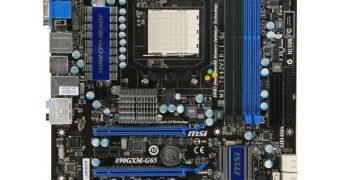It seems that Advanced Micro Devices and NVIDIA aren't the only two companies faced with inventory constraints. While they cope with 40nm-chip shortages, constraints that have only now started to be alleviated, motherboard makers are being faced with problems of their own. According to a report by Digitimes, first-tier motherboard makers can't get enough MLCCs, solid capacitors and LAN connectors.
One of the hardware and technology advancements that has been most advertised over the past few months is the 8 Series of chipsets from Advanced Micro Devices. Naturally, motherboard makers are hard at work stocking up on Thuban-supporting motherboards and, for that matter, new mainboards with support for Intel's Gulftown and the next-generation technologies known as SATA 6.0Gbps and USB 3.0. Still, manufacturers seem to be faced with insufficient component quantities and are, thus, aggressively placing orders in order to avoid any impact on their motherboard shipments.
Solid capacitors are mainly supplied by Sanyo Electric and Chemi-con, while Walsin Technology Corporation (WTC) and Yageo supply MLCCs. As for LAN controllers, the main manufacturer is Foxconn Electronics (Hon Hai Precision Industry), according to the sources of the report.
Among the hardware makers that are faced with undersupply issues are Micro-Star International (MSI), Elitegroup Computer Systems (ECS), Gigabyte Technology and Asustek Computer. On the other hand, there is also concern on the part of these companies' suppliers themselves, which see the possibility of their performance being affected in the second quarter. Such a situation would arise, the report says, because first-tier motherboard makers may suddenly stop orders in hopes of preventing oversupply.
Currently, component suppliers are faced with labor shortages, which are the main cause of the tight supply. Still, these conditions should improve by April, at which point the motherboard market will have entered the slow season, allowing for better component availability.

 14 DAY TRIAL //
14 DAY TRIAL //